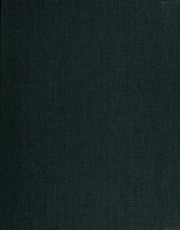
Tax incentives and the decision to purchase health insurance : evidence from the self-employed PDF
Preview Tax incentives and the decision to purchase health insurance : evidence from the self-employed
il.iT. LIBRARIES.OEVWgVj ^' working paper department of economics TAX INCENTIVES AND THE DECISION TO PURCHASE HEALTH INSURANCE: EVIDENCE FROM THE SELF-EMPLOYED Jonathan Gruber James Poterba 94-10 Feb. 1994 massachusetts institute of technology 50 memorial drive Cambridge, mass.02T39 TAX INCENTIVES AND THE DECISION TO PURCHASE HEALTH INSURANCE: EVIDENCE FROM THE SELF-EMPLOYED Jonathan Gniber James Poterba 94-10 Feb. 1994 M.I.T. LIBRARIES JUL 1 2 1994 RECEIVED TAX INCENTIVES AND THE DECISION TO PURCHASE HEALTH INSURANCE: EVIDENCE FROM THE SELF-EMPLOYED* Jonathan Gruber and James Poterba MIT and NBER July 1993 Revised February 1994 The Tax Reform Act of 1986 introduced a new tax subsidy for health insurance purchases by the self-employed. We analyze the changing patterns of insurance demand before and after tax reform to generate new estimates of how the after-tax price of insurance affects the discrete choice of whether to buy insurance. We employ both traditional regression models and difference-in- difference methods that compare changes in insurance coverage across groups around TRA86. The results from our most carefully controlled comparison suggestthat a one percent increase in the cost of insurance coverage reduces the probability that a self-employed single person will be insured by 1.8 percentage points. *We are grateful to Gary Engelhardt, Martin Feldstein, Victor Fuchs, Austan Goolsbee, Jerry Hausman, Lawrence Katz, Brigitte Madrian, Thomas McGuire, Joseph Newhouse, Douglas Staiger, John Shoven, Glenn Sueyoshi, Mark Wolfson, Richard Zeckhauser, two annonymous referees, and many seminar participants for helpful suggestions, to Todd Sinai and Aaron Yelowitz for expert assistance with the TAXSIM and SIPP tabulations, respectively, and to the Center for Advanced Study in Behavioral Sciences, the National Science Foundation, and the James Phillips Fund for research support. The value of employer-provided health Insurance benefits is not included in an individual's taxable income. This is one ofthe most costly federal tax expenditures, accounting for an estimated revenue loss of nearly $50 billion in 1993. The resulting tax wedge between insurance and other forms of compensation, which may induce "overinsurance," is often viewed as contributing to high and rising medical expenditures in the United States. Several recent proposals therefore call for capping the dollar value of health insurance benefits that can be excluded from taxation. Others, with the objective of lowering the number ofuninsured persons, propose extending the tax incentive for health insurance to encourage insurance purchase. The effect of these proposals depends critically on the price elasticity of demand for health insurance. Ifthis elasticity is small, then limiting the tax expenditure on health insurance may raise substantial amounts of revenue but not have much effect on the extent ofhealth insurance coverage, and proposals to expand insurance tax credits will have small effects in reducing the number of uninsured individuals. If the elasticity is large, however, tax policy will have large effects on the level of insurance coverage, but capping the employer deduction will raise less revenue.' Because it is difficult to find exogenous sources ofvariation in insurance prices, there is little convincing empirical evidence on the price elasticity of demand for health insurance. Variation either through time or in a cross-section of households or firms reflects differences in the demand for health care as well as in the costs of providing this care.^ There are few shocks to the supply side of the health insurance market that are not potentially correlated with shocks to insurance demand and that can therefore identify the insurance demand curve. Tax changes provide a potentially exogenous source of variation in the after-tax price of health insurance. Two types of studies have tried to exploit this source ofprice variation. The first, exemplified by Long and Scott [1982], Vroman and Anderson [1984], and Turner [1987], examines how coverage changes as tax rates change over time. The fact, for example, that health insurance coverage has fallen in die
